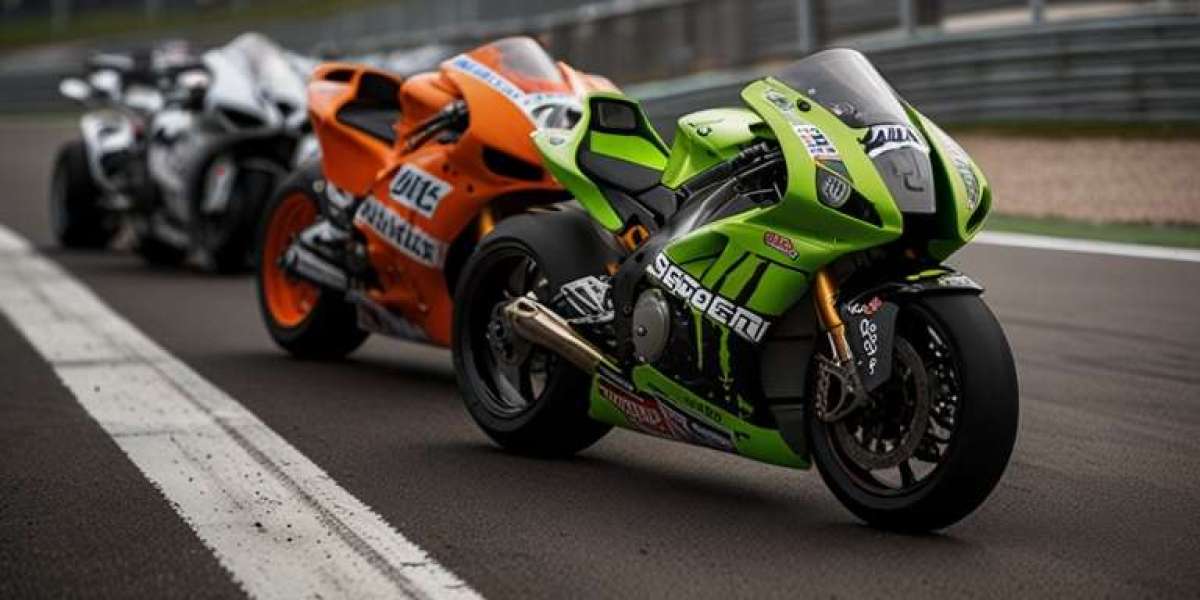Motorsports isn't merely a spectacle—it is an innovation engine. From advanced composites to high-performance electronics and life-saving safety systems, the Global Motorsport Products Market has evolved into a powerhouse of technological progression. According to the TechSci Research report, “Motorsport Products Market – Global Industry Size, Share, Trends, Competition Forecast & Opportunities, 2019–2029F”, the market was valued at USD 21.35 billion in 2023 and is projected to reach USD 30.16 billion by 2029, with a CAGR of 6.07%.
Download Free Sample Report: https://www.techsciresearch.com/sample-report.aspx?cid=22650
1. Industry Key Highlights
? Market growth—2023 to 2029: From USD 21.35 billion to USD 30.16 billion, driven by technological evolution, broader entertainment reach, and increased global participation.
Leading vehicle types: Touring cars dominate due to their relatability, affordability, and expansive fan base.
Racing types: Rallying, Formula, sports car, stock car, and off-road categories all contribute to the product demand landscape.
Geographic distribution: Mature markets like Europe and North America remain core, while Asia-Pacific continues to rise in prominence.
Key players: Giants such as Ferrari, Porsche, VW, Toyota, Mercedes, Ford, McLaren, Jaguar Land Rover, Honda, and ABT Sportsline.
2. Market Drivers
a. Innovation in Motorsport Engineering
Historically, motorsports has been a crucible for innovation—developments such as weight‑saving alloys, advanced aerodynamics, telemetry systems, and smart materials emerge first on the track, then make their way into consumer vehicles. Investments in R&D by automakers and specialist manufacturers have accelerated product evolution across seats, steering systems, braking, suspension, powertrain, safety gear, and more.
b. Electrification & Hybridization
Racing series across Formula E, rallycross, and endurance racing are embracing electric and hybrid powertrains. This shift financed by OEMs is fueling demand for high-voltage wiring, battery packs, cooling systems, and regenerative braking hardware—all part of the motorsport supplies ecosystem.
c. Expanding Global Fan Base
Television broadcasts, digital streaming platforms, and social media have spun motorsports from regional events into global entertainment phenomena. As audiences grow, so too does investment into tracks, events, sponsorships—and the longer-lasting product ecosystem spanning apparel, accessories, mods, and performance upgrades.
d. Heightened Safety & Regulations
Protecting drivers and spectators is a top priority. Regulations enforced by FIA, IMSA, Dorna, and other governing bodies continually raise the performance and safety bar. The result: greater demand for certified helmets, HANS devices, fire-retardant fabrics, roll cages, crash structures, and other compliant gear.
e. Decentralized Manufacturing & E-Support
The trend towards local manufacturing units closer to race venues, coupled with on-site additive manufacturing (3D-printing), enables rapid prototyping, trackside repairs, and swift part turnaround during race weekends—a service soon becoming the industry norm.
3. Emerging Trends
3.1 Digital Telemetry & AI-Powered Insights
The integration of telemetry sensors, big data analytics, machine learning, and edge computing enables real-time performance extraction: from engine tuning and thermal management to driver biometrics. Products like smart tires, active suspension modules, and AI-enhanced dashboards fuel this trend.
3.2 Virtual & Augmented Reality
Teams now simulate driving scenarios in VR before hitting the track. AR-enhanced tools assist engineers during pit stops or repairs, overlaying data onto parts for faster diagnostics—opening doors for new instrumentation and headsets.
3.3 Sustainable Materials & Recycling
With net-zero mandates close at hand, manufacturers are switching to bio-based composites, recyclable carbon fiber, less-toxic finishing solvents, and sustainable fuel systems. Motorsport products with sustainability claims are gaining market preference.
3.4 e-Sports & Sim Racing Synergies
The rise of sim racers creates crossover demand—racing cockpits, professional-grade steering wheels, force-feedback pedals, harnesses—opening a parallel sub-market feeding from both gaming and motorsport enthusiasts.
3.5 Integrated Customer Experiences
Product packs delivered to fans—think “Replica Race Seat + Branded Gear + AR Track Experience”—are creating new merchandise-driven revenue lines, anchored in high-end physical gear.
4. Drivers Fueling Growth
4.1 Performance & Speed Focus
The unyielding pursuit of lap time reduction ensures continuous improvements in engine components, aero packages, and lightweight structures—all primary revenue streams for motorsport suppliers.
4.2 Government & OEM Investments
Infrastructure development (new racetracks, EV lap regulations) and OEM sponsorship grants are channeled into product innovation.
4.3 Rise of New Racing Formats
From Formula E to electric karting and endurance ice racing in polar regions, emerging disciplines create demand for electrified drivetrain components, cold-weather gear, and novel chassis setups.
4.4 Brand Commoditization & Merchandise
Motorsport is no longer just competition—it’s culture. Clothing lines, lifestyle accessories, replica parts, and licensed gear drive downstream demand.
4.5 Accessibility & Safety Upgrades
As amateur categories (Pro-Am, TCR, eKarting) multiply, demand surges for certified, yet affordable, safety equipment, track packages, and low-entry racing kits.
5. Challenges & Risks
? Regulatory volatility: Sudden rule changes in FIA, FIM, etc., can shelf existing products overnight.
? R&D Cost Spike: Light metals, aerodynamics, batteries, composites—the bill for innovation keeps rising.
? Sustainability Transition: Materials shift from carbon-heavy to recyclable tech; implementation is capital-heavy.
? International Supply Chains: Events like COVID, climate strife, logistics risks push supply-chain resilience concerns.
? Digital Disruption: IoT analytics demand constant product and software refresh cycles.
6. Competitive Analysis
Ferrari, Porsche, Mercedes, McLaren: Vertical integration; advanced composites, powertrain, safety.
Volkswagen, Toyota, Ford: Deep bench in alternative propulsion, prototyping, accessible racing categories.
ABT Sportsline, Jaguar Land Rover: Boutique specialists focusing on tuning, aftermarket performance, cross-series licensing.
Honda: Powertrain, telemetry, e-racing.
Emerging startups: Battery-swapping, F1-grade sensor modules, 3D-printed parts—representing agile competition and niche segments.
7. Future Outlook
Continued electrification in mainstream motorsports.
Widespread adoption of AI and machine learning in product tuning.
Expansion of sim-racing gear into the broader automotive lifestyle segment.
Regulatory shifts toward ce carbon-footprint measures will intensify sustainability-led product lines.
Strategic acquisitions likely among established players consolidating emerging start-ups.
8. Ten Benefits of This Research Report
Grasp of major global motorsport products segments and growth trajectories.
Strategic forecasts (2023–2029) tailored to revenue, segments, and geographies.
Key competitive profiles and innovation pipelines.
Insights into high-growth verticals: electrification, sim‑racing, composites.
Sustainability benchmarks and compliance status.
Emerging e-commerce and merchandise analysis.
Risk assessments around policy and regulation shifts.
Market sizing and entry roadmap for new players.
OEM and sponsor investment landscape overview.
Cost–benefit analysis of populating pro‑racing vs grassroots categories.
9. Competitive Analysis
9.1 Tier-1 OEMs (Ferrari, Mercedes, Porsche)
Strengths: Full-stack development, brand equity, proprietary materials.
Weaknesses: Higher cost basis, slow-to-market decision cycles.
9.2 Tier-2 Manufacturers (Ford, VW, Toyota)
Strengths: Volume reach, modular shafts, global supply chains.
Weaknesses: Less specialization for niche series.
9.3 Boutique & Aftermarket Specialists (ABT, McLaren, Jaguar Land Rover)
Strengths: Customization, tuning, direct-to-consumer engagement.
Weaknesses: Limited scalability and OEM exclusivity.
9.4 Start-ups & Tech Innovators
Strengths: Agility, niche focus, digital-first solutions—battery systems, AR, sensors.
Weaknesses: Brand maturity risk, capital constraints.
10. Emerging Trends & Drivers
10.1 Tech Convergence
Wheels, seats, rigs, safety—all are merging with electronics, data analytics, and software-driven optimization.
10.2 Sustainability Imperative
Composites from recycled carbon, biodegradable resin, EV energy solutions—a market shift ahead of regulation.
10.3 Fan‑Driven Demand
From merchandise to sim‑racing rigs, fan consumption is moving from viewership to ownership.
10.4 Safety as a Selling Point
Modern consumers expect ABS level compliance even in aftermarket additions for touring and track cars.
11. In-Depth Market Segments
11.1 By Racing Type
Rallying, Formula, GT/Prototype, Touring, Stock, Off‑Road—each requires bespoke products in chassis, aerodynamics, powertrain, adhesion, landing (off-road).
11.2 By Vehicle Type
Single-seaters (F1, Indy), Touring (BTCC, DTM), Motorcycles (MotoGP, SBK), Off‑Road (Baja, Dakar). Touring Cars dominate due to cost and audience synergy.
11.3 By Region
Europe & North America: Traditional strongholds—Formula, sports-car.
APAC: Emerging hubs for touring, electric series, new circuits.
Middle East/Africa: Investment into off-road and desert rally product lines.
12. Market Projections & Volumes
Forecasted USD 30 billion by 2029, driven by electrification, electrified hybrid drivetrain kits, and safety gear expansion.
Touring car derivatives continue leading in units; single‑seater electrification drives margins.
Sim-racing gear sees triple-digit growth, entering consumer home-lifestyle domains.
13. Case Study: Touring Car Dominance
Touring series like WTCC and BTCC combine friendly‑race formats, relatable cars, and mass-market appeal—leading to accelerated global sponsorships, investment in chassis, aerodynamics, electronics, and rule-mandated safety equipment.
14. Sustainability: From Track to Product
Regulations from entities like FIA’s Environmental Accreditation are reshaping material sourcing. Recycled composite wheels, eco-petrol-free paints, and low-emission brake linings are no longer novelty—they’re strategic necessities.
15. Technology Arms Race
Smart components (connected suspension, real-time tire pressure, driver biometrics) are becoming base-line product requirements—not premium options. OEM-backed suppliers and deep-pocketed Tier 1s are already integrating.
16. Electrification & Powertrain Ecosystems
EV racing demands high-voltage harnesses, battery management, cooling, switchgear, insulation, lightweight battery boxes, and regenerative braking systems—diversifying product portfolios for multiple suppliers.
17. Lesser-Known Segments: Sim-Racing Gear
These “race-trim for the living room” products—including racing cockpits, hydraulically actuated wheelbases, and match-grade harnesses—are carving out a consumer-centric branch alongside traditional motorsport supplies.
18. Strategic Recommendations
R&D Investment: Focus on sustainable materials, telemetry, EV pilot kits.
Partnership Strategy: Tie-ups with sim-racing engines, OEM race divisions.
Compliance Continuity: Stay updated with FIA, IMSA, Le Mans, electric-series rules.
Aftermarket & Fan Engagement: Deploy licensed replicas, car-culture merchandise, AR renewables.
19. Conclusion
The Global Motorsport Products Market is surging toward USD 30 billion by 2029, catalyzed by innovation, audience growth, electrification, and safety regulation. While sustainability and regulatory complexities represent cost and strategic friction, the clear path to growth lies in technology synergy, vertical integration, and adaptability.
Contact Us-
Mr. Ken Mathews
708 Third Avenue,
Manhattan, NY,
New York – 10017
Tel: +1-646-360-1656
Email: [email protected]
Website: www.techsciresearch.com



